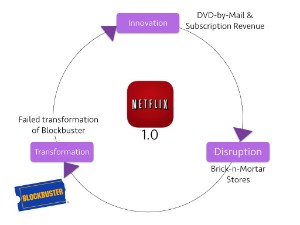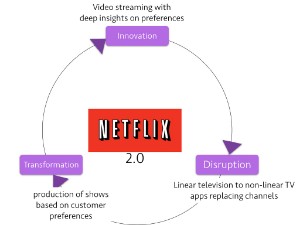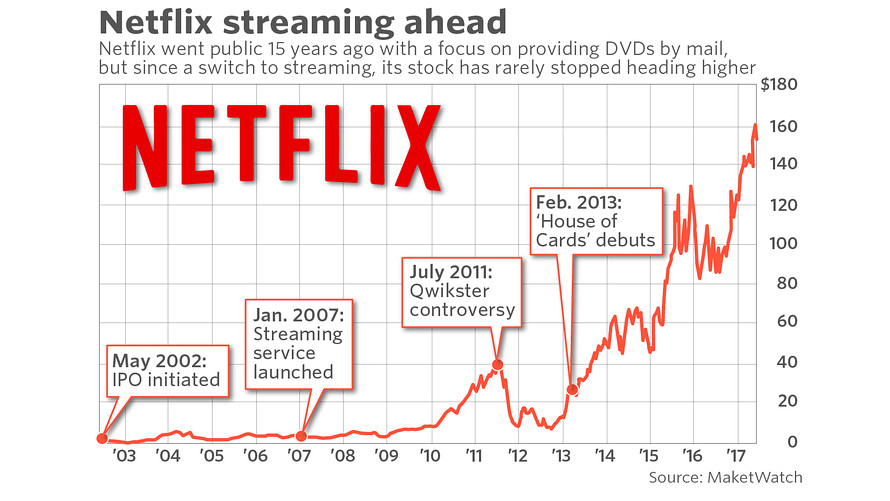Netflix: Queens of Disaggregation
While last week we talked about Alibaba, today I want to take you on a different trip. Let us talk about the success of Netflix a bit.
Go ahead and read this brilliant article by N. Venkat Venkatraman. I am borrowing some diagrams from his article to elaborate the disaggregation and the transformational effects on the media space.
Netflix went through two different disaggregation phases:-
Place Disrupted: Brick & Mortar vs Mailorder.

They started the mailorder business and removed the linkage of content from a physical space. This clearly disrupted the existing space and seriously challenged the existing businesses. A case study of Netflix vs Blockbuster has been doing rounds. What are thoughts on what value this “disaggregation” brought to the users? What was the value to Netflix, with user accounts being updated online? What data did they have their fingertips? What did they do with that data? Think about what else could they have done with it? Is there a way blockbuster could have survived? What were they thinking?
Media Disrupted: DVD vs Streaming
 In this phase, they not just removed the content from the media, they also disaggregated content from the playing devices. No DVD, No DVD Player, No TV. Watch anything, anywhere. They leveraged the Internet speeds, availability of smart-phones, tablets, WiFi etc. They were open and they used all means available to make the user experience hasslefree. They also moved into content creation and differentiating themselves from content distributors and broadcast TV services. They even changed the way people consumed the content. People can now catch up on the TV series over a weekend and not have to worry about missing an episode. With unique user insights, they are able to customize the user experience.
In this phase, they not just removed the content from the media, they also disaggregated content from the playing devices. No DVD, No DVD Player, No TV. Watch anything, anywhere. They leveraged the Internet speeds, availability of smart-phones, tablets, WiFi etc. They were open and they used all means available to make the user experience hasslefree. They also moved into content creation and differentiating themselves from content distributors and broadcast TV services. They even changed the way people consumed the content. People can now catch up on the TV series over a weekend and not have to worry about missing an episode. With unique user insights, they are able to customize the user experience.
Look at the graph below to see how they have grown.

What do you think they are going to do next?
The best proof of success is the rise of copy-cats or me-toos. Next week, I will talk about some Me-Toos, so stay tuned.